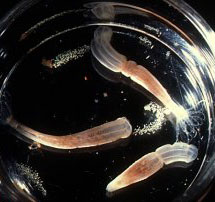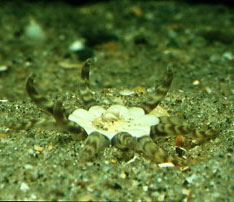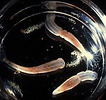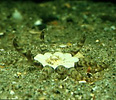Athenaria
- Edwardsiidae
- Halcampoididae
- Haloclavidae
- Andresiidae
- Halcampidae
- Limnactiniidae
- Haliactiidae
- Octineonidae
- Andwakiidae
Characteristics
Nyantheae [sic] without basilar muscles. Body as a rule very elongate, more or less vermiform, often divisible into different regions. Aboral end of the body usually rounded being a physa often used for digging, which does sometimes adhere to small objects and then becomes more or less flattened. As a rule no sphincter, but when present this may be endodermal or mesogloeal. Tentacles and mesenteries usually few, rarely more than 48, cyclically arranged. Mesenteries as a rule divisible into macro- and microcnemes. Retractors of the macrocnemes usually strongly restricted, reniform, or circumscribed. Parietal part of the longitudinal mesenterial muscles commonly differentiated from the retractors forming a distinct parietal muscle together with the parietobasilar muscles. In the more differentiated genera acontia may appear.References
Carlgren, O. 1949. A Survey of the Ptychodactiaria, Corallimorpharia and Actiniaria. Kungl. Svenska Vetenskapsakadamiens Handlingar, series 4, volume 1, number 1.
Title Illustrations

Left:
Nematostella vectensis (Edwardsiidae) with egg masses.
Permission by Prof. C. Hand to take this picture in the Bodega Marine Lab, University of California is gratefully acknowledged.
Right:
Peachia hastata (Haloclavidae).
France. Collection and donation of this specimen by Dr. R. Dekker (NIOZ, Texel, Netherlands) is gratefully acknowledged.
Photographs copyright © 2000, Ron Ates.
About This Page
The information provided on this page is based on Oscar Carlgren's 1949 catalog.Copyright © 1949 Swedish Academy of Sciences.
Please note that Carlgren's text contains a number of errors, and much of the information is now out of date. An update of the catalog is currently under preparation in Daphne Fautin's laboratory, and the results of this work will be incorporated in future versions of this page.
Keyboarding of Carlgren's catalog was done as part of a project to create an electronic database of the sea anemones of the world, funded by NSF Grant DEB9521819, awarded to Daphne G. Fautin. This grant is in the program Partnerships to Enhance Expertise in Taxonomy (PEET). Susanne Hauswaldt, Katherine Pearson, and April Wakefield-Pagels contributed to the keyboarding effort.
Correspondence regarding this page should be directed to Daphne G. Fautin at
Page copyright © 2000
All Rights Reserved.
Citing this page:
Tree of Life Web Project. 2000. Athenaria. Version 01 January 2000 (temporary). http://tolweb.org/Athenaria/17706/2000.01.01 in The Tree of Life Web Project, http://tolweb.org/










 Go to quick links
Go to quick search
Go to navigation for this section of the ToL site
Go to detailed links for the ToL site
Go to quick links
Go to quick search
Go to navigation for this section of the ToL site
Go to detailed links for the ToL site